Determination of Antioxidants by DPPH Radical Scavenging Activity and Quantitative Phytochemical Analysis of Ficus religiosa
Abstract
:1. Introduction
2. Materials and Method
2.1. Materials
2.2. Methods
2.2.1. Preparation of Plant Extract
2.2.2. Preparation of Green Nano-MgO Using Ficus Religiosa
2.2.3. DPPH RSA Was Used to Test the Antioxidant Property of F. religiosa Dilute Leaf Extracts
2.2.4. Tannin Estimation Using the Van Burden and Robinson Methods
2.2.5. Folin–Ciocalteu Technique for Calculating Total Phenolic Concentration
2.2.6. Dinitrosalicylic Acid (DNS) Technique for Carbohydrate Analysis or Sugar Reduction
2.2.7. Folin and Lowry Methods for Total Protein Content Estimation
3. Results
3.1. Tannin Estimation
3.2. Total Phenolic Content Estimation
3.3. Estimation of Carbohydrates or Reducing Sugar
3.4. Estimation of Protein Concentration
4. Discussion
5. Conclusions
Author Contributions
Funding
Institutional Review Board Statement
Informed Consent Statement
Data Availability Statement
Conflicts of Interest
Sample Availability
References
- Annu, A.A.; Ahmed, S. Green Synthesis of Metal, Metal Oxide Nanoparticles, and Their Various Applications. In Handbook of Ecomaterials; Martínez, L., Kharissova, O., Kharisov, B., Eds.; Springer: Cham, Switzerland, 2018. [Google Scholar] [CrossRef]
- Zhu, L.; Zeng, W. Room-temperature gas sensing of ZnO-based gas sensor: A review. Sens. Actuators A Phys. 2017, 267, 242–261. [Google Scholar] [CrossRef]
- Jin, H.; Zhao, X.; Wu, Z.; Cao, C.; Guo, L. Supercritical water synthesis of nano-particle catalyst on TiO2 and its application in supercritical water gasification of biomass. J. Exp. Nanosci. 2017, 12, 72–82. [Google Scholar] [CrossRef] [Green Version]
- Das, B.; Moumita, S.; Ghosh, S.; Khan, M.I.; Indira, D.; Jayabalan, R.; Tripathy, S.K.; Mishra, A.; Balasubramanian, P. Biosynthesis of magnesium oxide (MgO) nanoflakes by using leaf extract of Bauhinia purpurea and evaluation of its antibacterial property against Staphylococcus aureus. Mater. Sci. Eng. C 2018, 91, 436–444. [Google Scholar] [CrossRef]
- Amrulloh, H.; Fatiqin, A. Sintesis Nanopartikel MgO Menggunakan Ekstrak Daun Kelor (Moringa Oleifera) dan Uji Aktivitas Antibakteri Terhadap Escherchia Coli dan Staphylococcus aureus, 1st ed.; Pustaka Learning Center: Malang, Indonesia, 2020; p. 145. [Google Scholar]
- Leung, Y.H.; Ng, A.M.C.; Xu, X.; Shen, Z.; Gethings, L.A.; Wong, M.T.; Chan, C.M.N.; Guo, M.Y.; Ng, Y.H.; Djurišić, A.B.; et al. Mechanisms of antibacterial activity of MgO: Non-ros mediated toxicity of MgO nanoparticles towards Escherichia coli. Small 2014, 10, 1171–1183. [Google Scholar] [CrossRef] [PubMed]
- Shekhar, S.; Liu, Y.; Wang, S.; Zhang, H.; Fang, X.; Zhang, J.; Fan, L.; Zheng, B.; Roman, R.J.; Wang, Z.; et al. Novel Mechanistic Insights and Potential Therapeutic Impact of TRPC6 in Neurovascular Coupling and Ischemic Stroke. Int. J. Mol. Sci. 2021, 22, 2074. [Google Scholar] [CrossRef] [PubMed]
- Chen, K.; Lu, P.; Beeraka, N.M.; Sukocheva, O.A.; Madhunapantula, S.V.; Liu, J.; Sinelnikov, M.Y.; Nikolenko, V.N.; Bulygin, K.V.; Mikhaleva, L.M.; et al. Mitochondrial mutations and mitoepigenetics: Focus on regulation of oxidative stress-induced responses in breast cancers. In Seminars in Cancer Biology; Academic Press: Cambridge, MA, USA, 2020. [Google Scholar] [CrossRef]
- Patil, A.B.; Bhanage, B.M. Novel and green approach for the nanocrystalline magnesium oxide synthesis and its catalytic performance in Claisen-Schmidt condensation. Catal. Commun. 2013, 36, 79–83. [Google Scholar] [CrossRef]
- Pilarska, A.A.; Klapiszewski, Ł.; Jesionowski, T. Recent development in the synthesis, modification and application of Mg(OH)2 and MgO: A review. Powder Technol. 2017, 319, 373–407. [Google Scholar] [CrossRef]
- Park, J.-W.; Lee, W.-K.; Lee, C.-H. Preparation of nano-magnesium oxide from seawater bittern using decarboxylation/precipitation method. Mol. Cryst. Liq. Cryst. 2016, 636, 142–148. [Google Scholar] [CrossRef]
- Amrulloh, H.; Simanjuntak, W.; Situmeang, R.T.M.; Sagala, S.L.; Bramawanto, R.; Fatiqin, A.; Nahrowi, R.; Zuniati, M. Preparation of nano-magnesium oxide from Indonesia local seawater bittern using the electrochemical method. Inorg. Nano-Met. Chem. 2020, 50, 693–698. [Google Scholar] [CrossRef]
- Gudikandula, K.; Maringanti, S.C. Synthesis of silver nanoparticles by chemical and biological methods and their antimicrobial properties. J. Exp. Nanosci. 2016, 11, 714–721. [Google Scholar] [CrossRef]
- Moorthy, S.K.; Ashok, C.H.; Rao, K.V.; Viswanathan, C. Synthesis and characterization of MgO nanoparticles by neem leaves through green method. Mater. Today Proc. 2015, 2, 4360–4368. [Google Scholar] [CrossRef]
- Manjula, R.; Thenmozhi, M.; Thilagavathi, S.; Srinivasan, R.; Kathirvel, A. Green synthesis and characterization of manganese oxide nanoparticles from Gardenia resinifera leaves. Mater. Today Proc. 2019, 26, 3559–3563. [Google Scholar] [CrossRef]
- Halliwell, B. Free radicals and antioxidants–Quo vadis? Trends Pharmacol. Sci. 2011, 32, 125–130. [Google Scholar] [CrossRef]
- Ye, Z.W.; Zhang, J.; Townsend, D.M.; Tew, K.D. Oxidative stress, redox regulation and diseases of cellular differentiation. Biochim. Biophys. Acta 2015, 1850, 1607–1621. [Google Scholar] [CrossRef] [Green Version]
- Diplock, A.T.; Charleux, J.L.; Crozier-Willi, G.; Kok, F.J.; Rice-Evans, C.; Roberfroid, M.; Stahl, W.; Vina-Ribes, J. Functional food science and defence against reactive oxygen species. Br. J. Nutr. 1998, 80, S77–S112. [Google Scholar] [CrossRef] [Green Version]
- Valko, M.; Leibfritz, D.; Moncol, J.; Cronin, M.T.; Mazur, M.; Telser, J. Free radicals and antioxidants in normal physiological functions and human disease. Int. J. Biochem. Cell Biol. 2007, 39, 44–84. [Google Scholar] [CrossRef]
- Speakman, J.R.; Selman, C. The free-radical damage theory: Accumulating evidence against a simple link of oxidative stress to ageing and lifespan. BioEssays 2011, 33, 255–259. [Google Scholar] [CrossRef]
- Halliwell, B. Free radicals and antioxidants: A personal view. Nutr. Rev. 1994, 52, 253–265. [Google Scholar] [CrossRef]
- Halliwell, B. Oxidative stress and neurodegeneration; where are we now? J. Neurochem. 2006, 97, 1634–1658. [Google Scholar] [CrossRef]
- Khlebnikov, A.I.; Schepetkin, I.A.; Domina, N.G.; Kirpotina, L.N. Improved quantitative structure–activity relationship models to predict antioxidant activity of flavonoids in chemical, enzymatic and cellular systems. Bioorg. Med. Chem. 2007, 15, 1749–1770. [Google Scholar] [CrossRef] [Green Version]
- Middleton, E., Jr.; Kandaswami, C.; Theoharides, T.C. The effects of plant flavonoids on mammalian cells: Implications for inflammation, heart disease and cancer. Pharmacol. Rev. 2000, 52, 673–751. [Google Scholar]
- Nichols, J.A.; Katiyar, S.K. Skin photoprotection by natural polyphenols: Anti-inflammatory, antioxidant and DNA repair mechanisms. Arch. Dermatol. Res. 2010, 302, 71–83. [Google Scholar] [CrossRef] [Green Version]
- Carvalho, M.; Ferreira, P.J.; Mendes, V.S.; Silva, R.; Pereira, J.A.; Jerónimo, C.; Silva, B.M. Human cancer cell antiproliferative and antioxidant activities of Juglansregia L. Food Chem. Toxicol. 2010, 48, 441–447. [Google Scholar] [CrossRef]
- Herrling, T.; Jung, K.; Fuchs, J. The role of melanin as protector against free radicals in skin and its role as free radical indicator in hair. Spectrochim. Acta A 2008, 69, 1429–1435. [Google Scholar] [CrossRef]
- Dröge, W. Free radicals in the physiological control of cell function. Physiol. Rev. 2002, 82, 47–95. [Google Scholar] [CrossRef]
- Halliwell, B. Free radicals and antioxidants: Updating a personal view. Nutr. Rev. 2012, 70, 257–265. [Google Scholar] [CrossRef]
- Goldschmidt, S.; Renn, K. Amine oxidation IV. Diphenyl-trinitrophenylhydrazyl. Chem. Ber. 1922, 55, 628–643. [Google Scholar] [CrossRef]
- Shantabi, L.; Jagetia, G.C.; Ali, M.A.; Singh, T.T.; Devi, S.V. Antioxidant potential of Croton caudatus leaf extract in vitro. Transl. Med. Biotechnol. 2014, 2, 1–15. [Google Scholar]
- Archana Gupta, S.; Gupta, V.K. Green Synthesis Of MgO Nanoparticles Prepared By Ficus religiosa And Monitoring of Their Antimicrobial Activity Against Pseudomonas aeruginosa. Solid State Technol. 2020, 63, 3259–3266. [Google Scholar]
- Moon, J.K.; Shibamoto, T. Antioxidant Assays for Plant and Food Components. J. Agric. Food Chem. 2009, 57, 1655–1666. [Google Scholar] [CrossRef]
- Ndhlala, A.R.; Moyo, M.; Van Staden, J. Natural Antioxidants: Fascinating or Mythical Biomolecules? Molecules 2010, 15, 6905–6930. [Google Scholar] [CrossRef] [Green Version]
- Sridhar, K.; Charles, A.L. In vitro antioxidant activity of Kyoho grape extracts in DPPH and ABTS assays: Estimation methods for EC50 using advanced statistical programs. Food Chem. 2019, 275, 41–49. [Google Scholar] [CrossRef]
- Aini, F.; Maritsa, H.; Riany, H. Antioxidant activity of nipahendophytic fungi (Nypha fruticans Wurmb) from Tanjung JabungTimur Jambi. J. Biota 2019, 5, 104–109. [Google Scholar] [CrossRef]
- Kurniawan, Y.S.; Priyangga, K.T.A.; Krisbiantoro, P.A.; Imawan, A.C. Green chemistry influences in organic synthesis: A review. J. Multidiscip. Appl. Nat. Sci. 2021, 1, 1–12. [Google Scholar] [CrossRef]
- Amrulloh, H.; Fatiqin, A.; Simanjuntak, W.; Afriyani, H.; Annissa, A. Bioactivities of nanoscale magnesium oxide prepared using aqueous extract of Moringaoleifera leaves as green agent. Adv. Nat. Sci. Nanosci. Nanotechnol. 2021, 12, 015006. [Google Scholar] [CrossRef]
- Lalrinzuali, K.; Vabeiryureilai, M.; Jagetia, G.C.; Lalawmpuii, P.C. Free radical scavenging and antioxidant potential of different extracts of Oroxylumindicum in vitro. Adv. Biomed. Pharm. 2015, 2, 120–130. [Google Scholar]
- Jagetia, G.C.; Venkatesh, P.; Baliga, M.S. Evaluation of the radioprotective effect of Aeglemarmelos (L.) Correa in cultured human peripheral blood lymphocytes exposed to different doses of gamma-radiation: A micronucleus study. Mutagenesis 2003, 18, 387–393. [Google Scholar] [CrossRef]
- Baliga, M.S.; Jagetia, G.C.; Rao, S.K.; KiranBabu, S. Evaluation of nitric oxide scavenging activity of certain spices in vitro: A preliminary study. Nahrung/Food 2003, 47, 261–264. [Google Scholar] [CrossRef]
- Wong, S.P.; Lai, P.L.; Jen, H.W.K. Antioxidant activities of aqueous extracts of selected plants. Food Chem. 2006, 99, 775–783. [Google Scholar] [CrossRef]
- Lalrinzuali, K.; Vabeiryureilai, M.; Jagetia, G.C. The analysis of antioxidant activity and phenolic contents of selected medicinal plants of Mizoram. Genomics Appl. Biol. 2015, 6, 1–12. [Google Scholar]
- Tejero, J.; Gayoso, S.; Caro, I.; Cordoba-Diaz, D.; Mateo, J.; Basterrechea, J.E.; Girbés, T.; Jiménez, P. Comparative analysis of the antioxidant and free-radical scavenging activities of different water-soluble extracts of green, black and oolong tea samples. Food Nutr. Sci. 2014, 5, 2157–2166. [Google Scholar] [CrossRef] [Green Version]
- Gandhimathi, C.; Sathiyasekaran, B.W.; Perumal, P.T.; Rose, C. Nutritional evaluation, in vitro free radical scavenging and in vivo anti-inflammatory effects of gisekiapharnaceoides and identification of kaempferol as a nutraceutical agent. Br. Biotechnol. J. 2011, 1, 113–135. [Google Scholar] [CrossRef]
- Liu, P.; Gao, Y.T.; Yu, J.J.; Cha, J.W.; Zhao, D.M.; Li, Y.H.; Chen, J.H. DPPH radical scavenging activity of kaempferol. Adv. Mater. Res. 2013, 781, 1294–1297. [Google Scholar] [CrossRef]
- Saw, C.L.L.; Guo, Y.; Yang, A.Y.; Paredes-Gonzalez, X.; Ramirez, C.; Pung, D.; Kong, A.N.T. The berry constituents quercetin, kaempferol, and pterostilbene synergistically attenuate reactive oxygen species: Involvement of the Nrf2-ARE signaling pathway. Food Chem. Toxicol. 2014, 72, 303–311. [Google Scholar] [CrossRef]
- Jagetia, G.C.; Venkatesha, V.A. Effect of mangiferin on radiation-induced micronucleus formation in cultured human peripheral blood lymphocytes. Environ. Mol. Mutagen. 2005, 46, 12–21. [Google Scholar] [CrossRef]
- Hayyan, M.; Hashim, M.A.; AlNashef, I.M. Superoxide ion: Generation and chemical implications. Chem. Rev. 2016, 116, 3029–3085. [Google Scholar] [CrossRef] [Green Version]
- Floyd, R.A.; Lewis, C.A. Hydroxyl free radical formation from hydrogen peroxide by ferrous iron-nucleotide complexes. Biochemistry 1983, 22, 2645–2649. [Google Scholar] [CrossRef]
- Michiels, C. Physiological and pathological responses to hypoxia. Am. J. Pathol. 2004, 164, 1875–1882. [Google Scholar] [CrossRef] [Green Version]
- Dizdaroglu, M.; Jaruga, P. Mechanisms of free radical-induced damage to DNA. Free Rad. Res. 2012, 46, 382–419. [Google Scholar] [CrossRef]
- Treml, J.; Šmejkal, K. Flavonoids as potent scavengers of hydroxyl radicals. Comprehen. Rev. Food Sci. Food Saf. 2016, 15, 720–738. [Google Scholar] [CrossRef]
- Marković, J.M.; Pejin, B.; Milenković, D.; Amić, D.; Begović, N.; Mojović, M.; Marković, Z.S. Antiradical activity of delphinidin, pelargonidin and malvin towards hydroxyl and nitric oxide radicals: The energy requirements calculations as a prediction of the possible antiradical mechanisms. Food Chem. 2017, 218, 440–446. [Google Scholar] [CrossRef]
- Lushchak, V.I. Free radicals, reactive oxygen species, oxidative stress and its classification. Chem. Biol. Int. 2014, 224, 164–175. [Google Scholar] [CrossRef]
- Kirkinezosa, I.G.; Morae, C.T. Reactive oxygen species and mitochondrial diseases. Cell Dev. Biol. 2001, 12, 449–457. [Google Scholar] [CrossRef]
- Robak, J.; Gryglewski, R.J. Flavonoids are scavengers of superoxide anions. Biochem. Pharmacol. 1988, 37, 837–841. [Google Scholar] [CrossRef]
- Brainina, K.Z.; Ivanova, A.V.; Sharafutdinova, E.N.; Lozovskaya, E.L.; Shkarina, E.I. Potentiometry as a method of antioxidant activity investigation. Talanta 2007, 71, 13–18. [Google Scholar] [CrossRef]
- Kedare, S.B.; Singh, R.P. Genesis and development of DPPH method of antioxidant assay. J. Food Sci. Technol. 2011, 48, 412–422. [Google Scholar] [CrossRef] [Green Version]
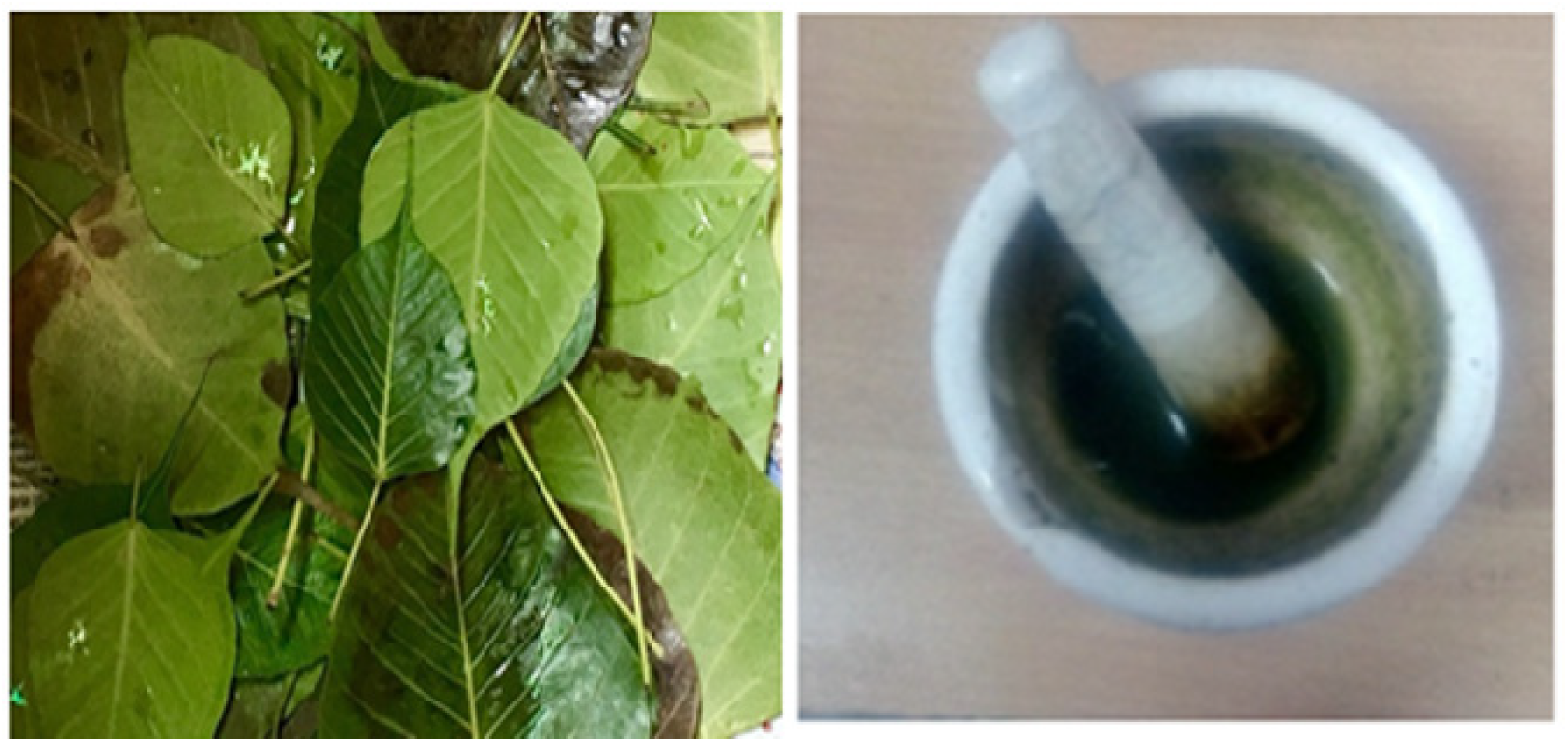

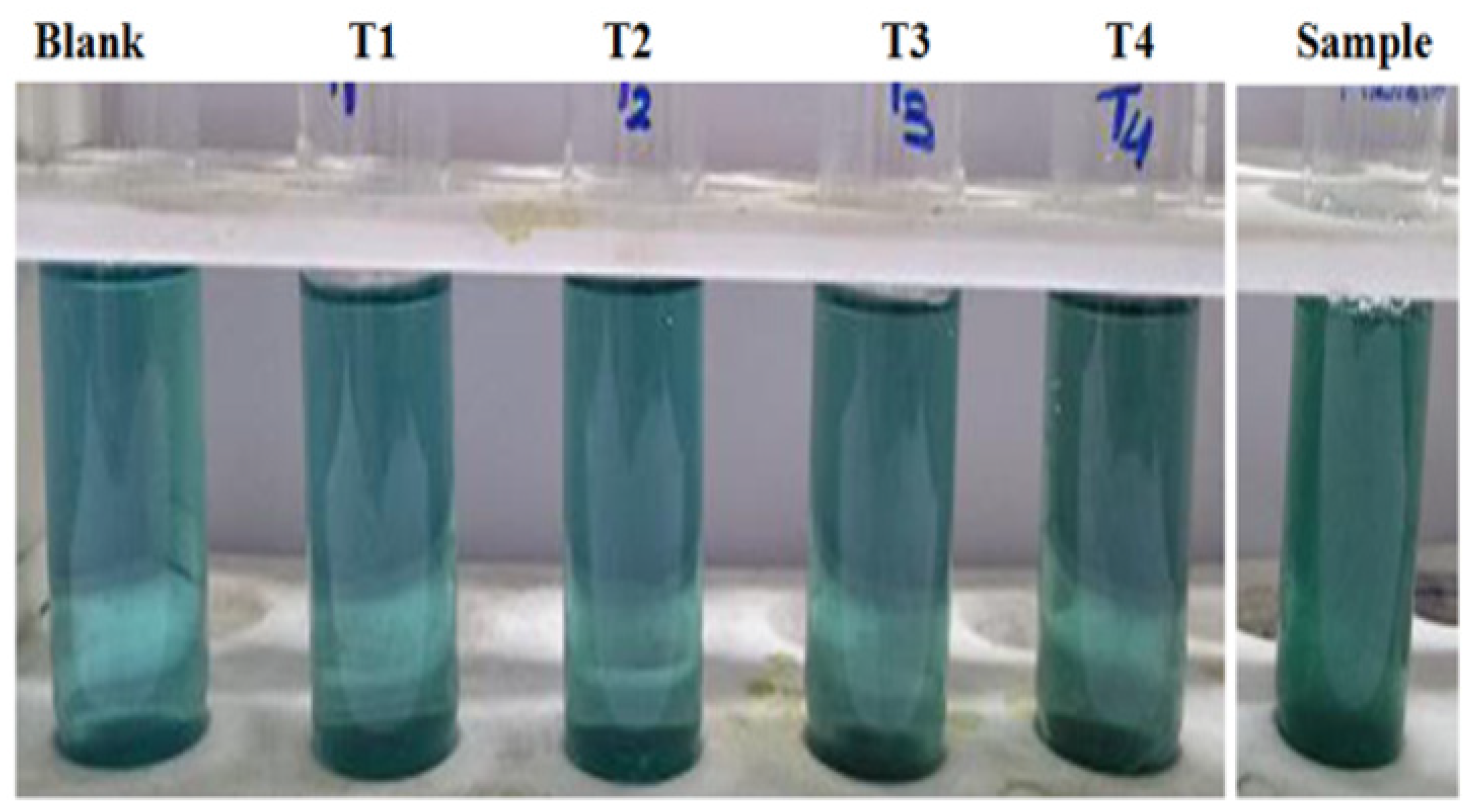
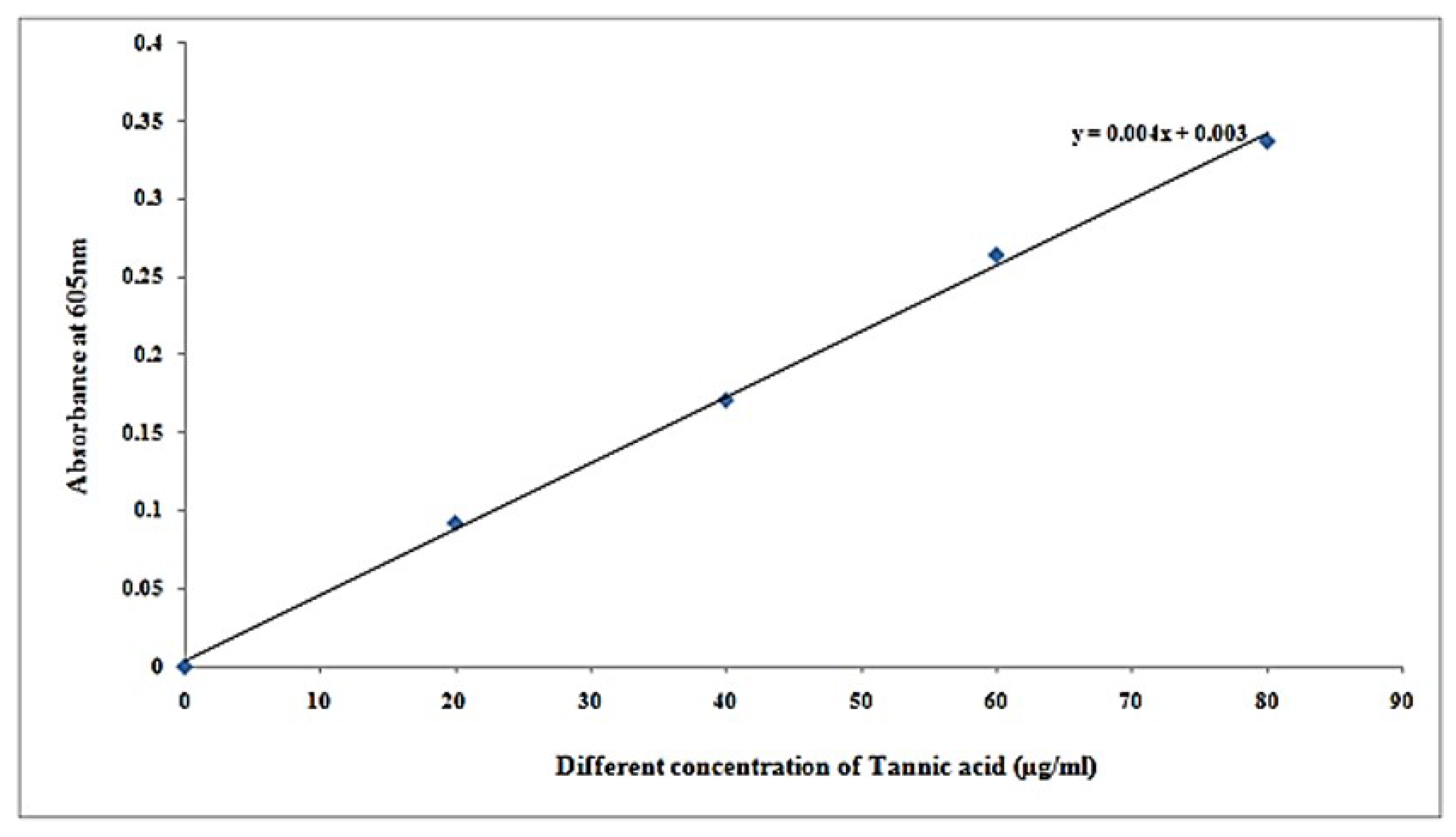
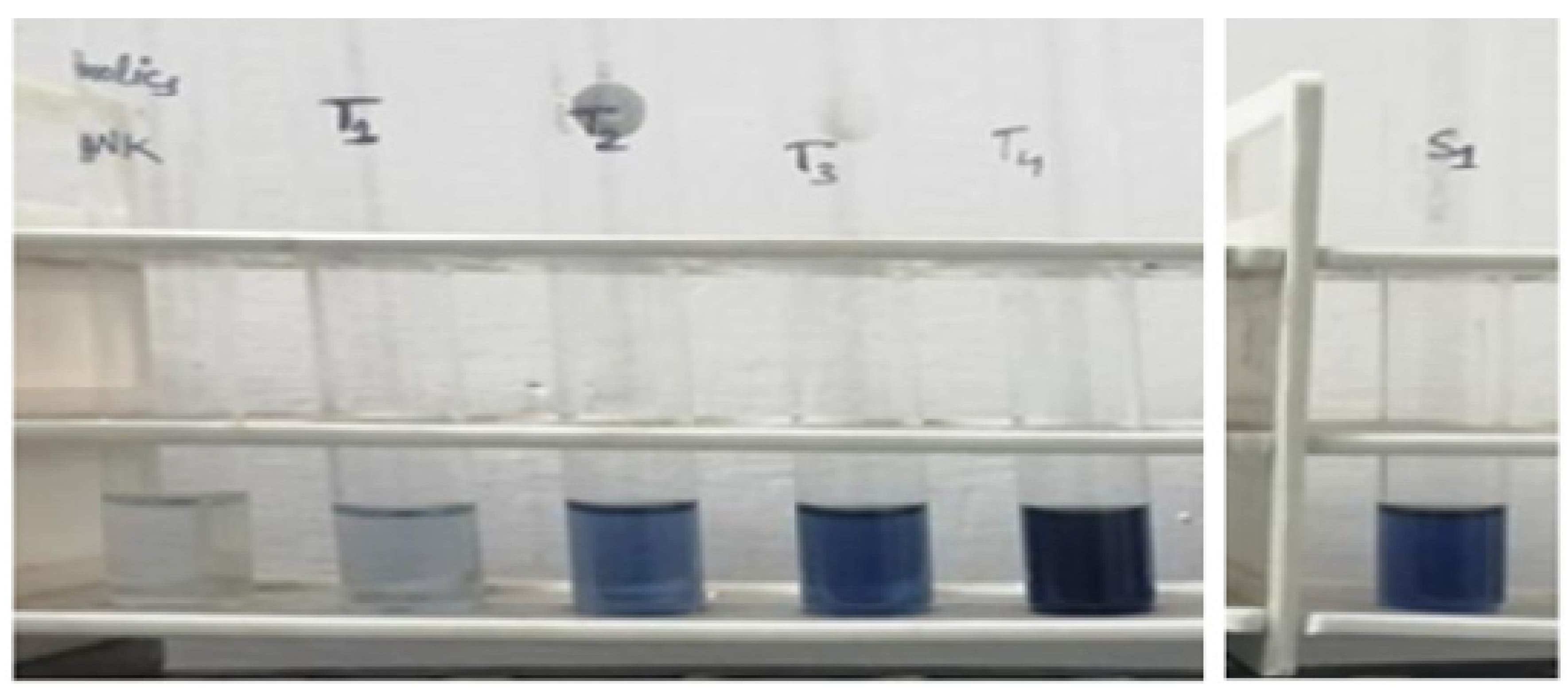
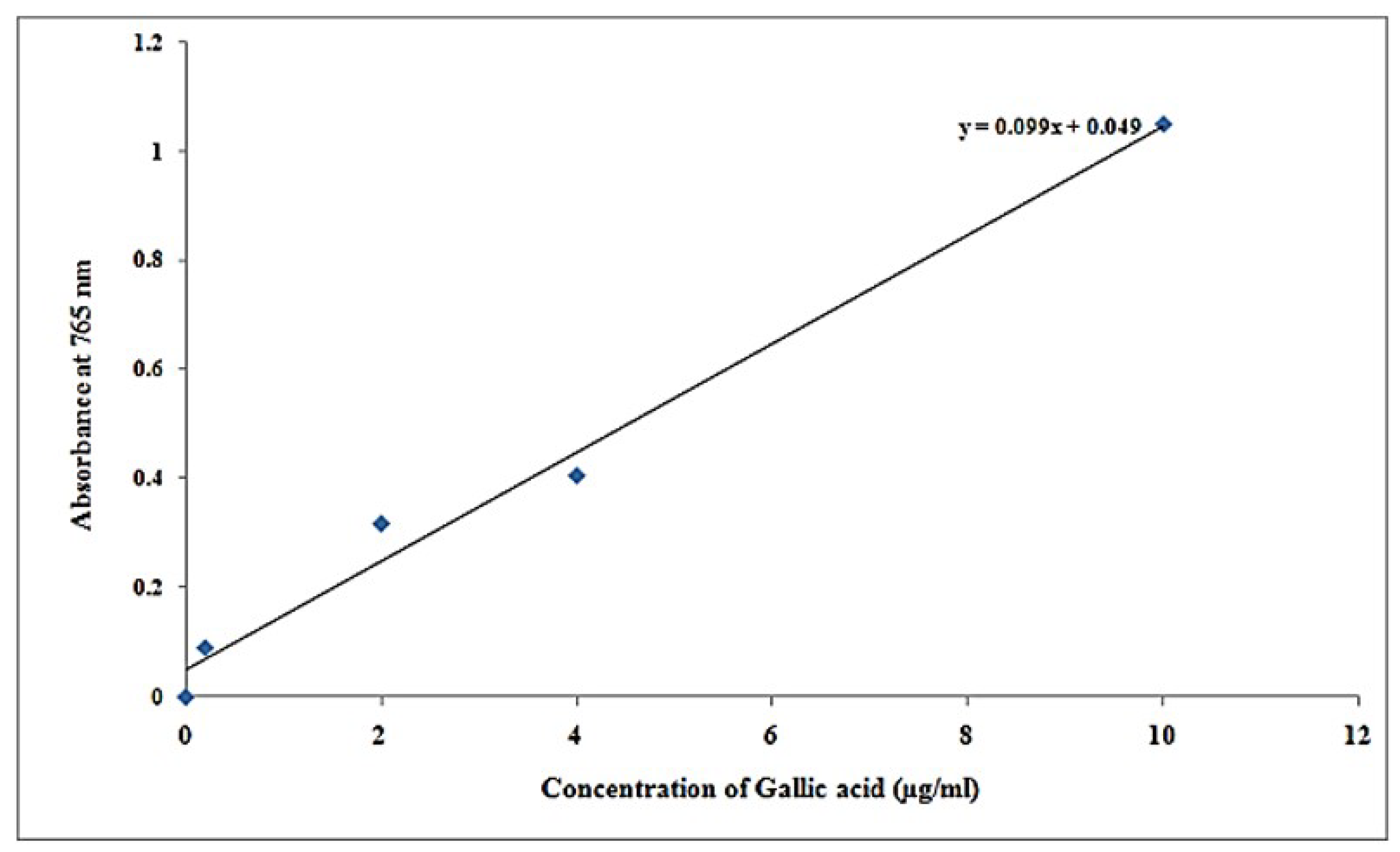
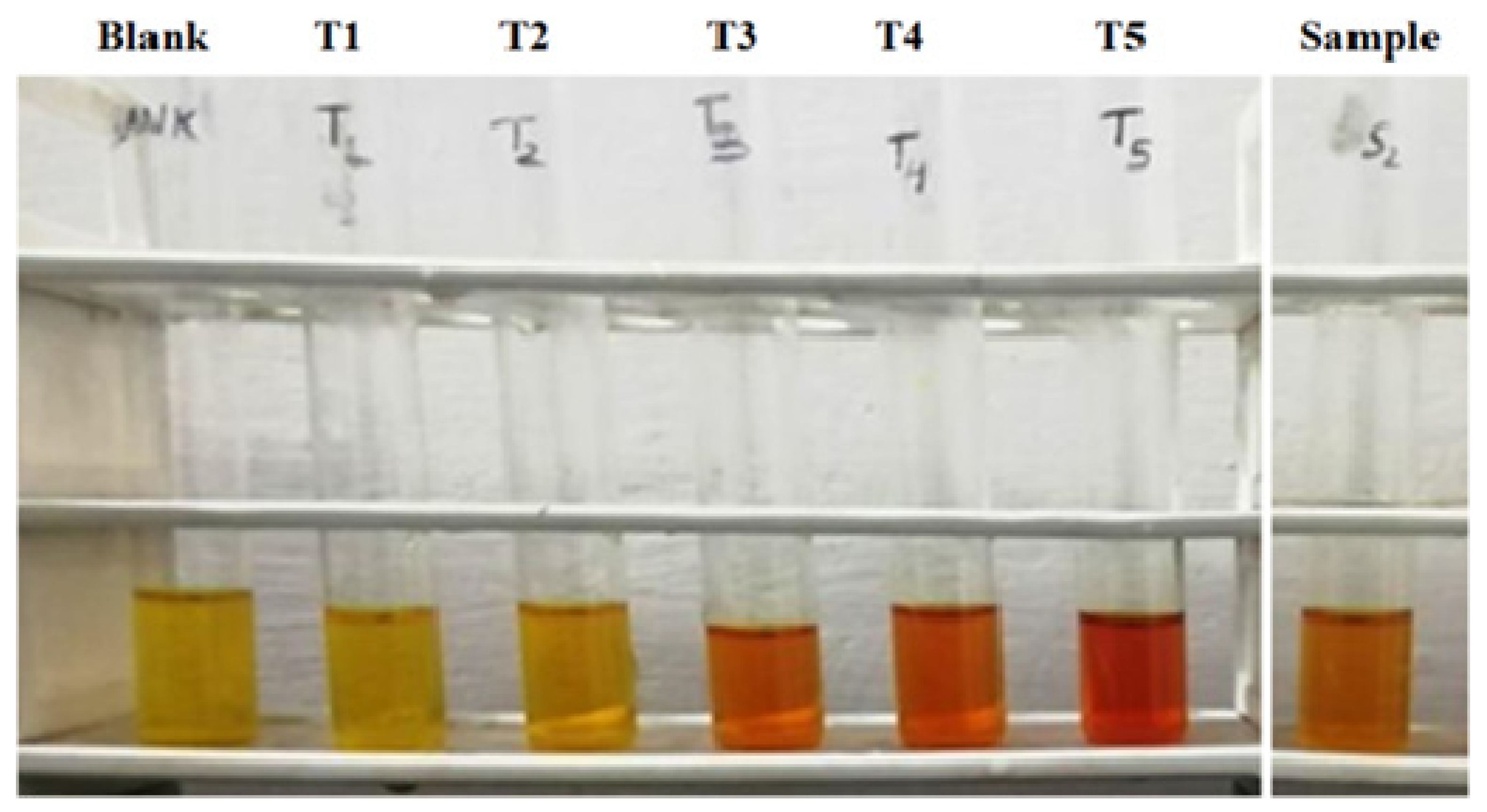

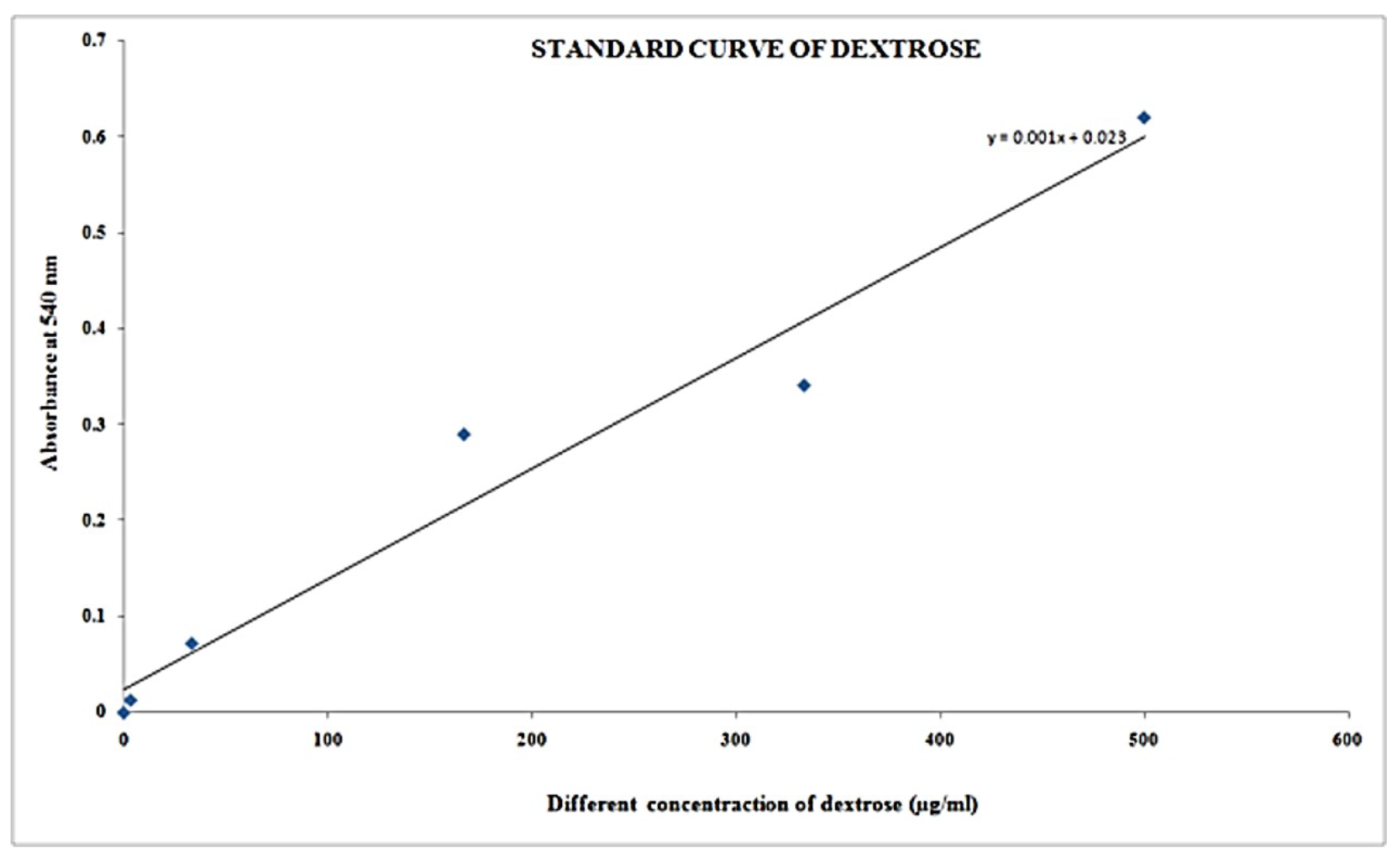
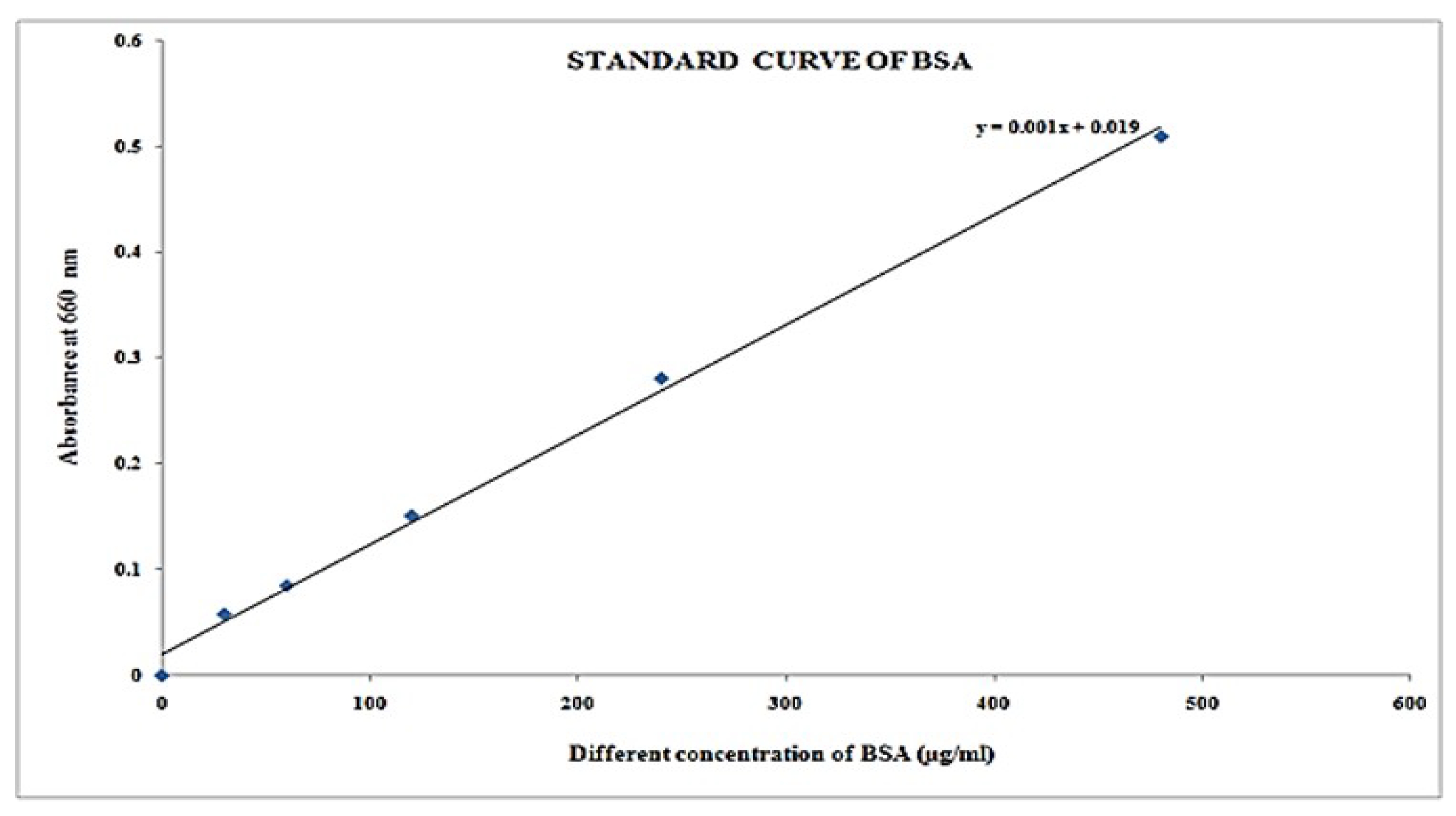
| S. No. | Absorbance at 517 nm | % of Antioxidant |
|---|---|---|
| Control | 0.972 | - |
| Sample | 0.550 | 43.415 |
| S. No. | Absorbance at 517 nm | % of Antioxidant |
|---|---|---|
| Control | 1.092 | - |
| MgO nanoparticles | 0.461 | 57.783 |
| Tube | d H2O (mL) | Standard/Specimen (mL) | Reagent 1 (mL) | Incubate at RT for 10 min | Take the O.D after 10 min at 605 nm |
| Blank | 5 | 0 | 2 | ||
| T1 | 4.9 | 0.1 | 2 | ||
| T2 | 4.8 | 0.2 | 2 | ||
| T3 | 4.7 | 0.3 | 2 | ||
| T4 | 4.6 | 0.4 | 2 | ||
| Sample | 4.5 | 0.5 | 2 |
| Tube | Content (µg/mL) | Absorbance at 605 nm |
|---|---|---|
| Empty | 0 | 0.000 |
| T1 | 20 | 0.092 |
| T2 | 40 | 0.171 |
| T3 | 60 | 0.264 |
| T4 | 80 | 0.337 |
| Specimen (Ficus religiosa) | - | 0.302 |
| Test Tube | Absorbance at 605 nm | Concentration (µg/500 µL) | Concentration (µg/mL) |
|---|---|---|---|
| Specimen | 0.302 | 74.75 | 149.5 |
| Specimen | d H2O (µL) | GA/Specimen (µL) | FC Reagent (mL) | Incubate at room temp. for 5 min. | 7.5 % Na2CO3 (mL) | Incubate at room temp for 1 h | Absorbance at 765 nm |
| Blank | 500 | 0 | 2.5 | 2 | |||
| T-1 | 499 | 1 | 2.5 | 2 | |||
| T-2 | 490 | 10 | 2.5 | 2 | |||
| T-3 | 480 | 20 | 2.5 | 2 | |||
| T-4 | 450 | 50 | 2.5 | 2 | |||
| T-5 | 400 | 100 | 2.5 | 2 | |||
| Sample 1 | 400 | 100 | 2.5 | 2 |
| Specimen | Concentration of Gallic Acid (µg/mL) | Absorbance at 765 nm |
|---|---|---|
| Blank | 0 | 0.000 |
| T-1 | 0.2 | 0.090 |
| T-2 | 2.0 | 0.318 |
| T-3 | 4.0 | 0.406 |
| T-4 | 10.0 | 1.050 |
| Specimen | - | 0.555 |
| Test Tube | Absorbance at 765 nm | Concentration (µg/100 µL) | Concentration (µg/mL) |
|---|---|---|---|
| Sample | 0.555 | 5.11 | 51.11 |
| Test Tube | DL (mL) | Standard/Sample (mL) | DNS Reagent (mL) | Incubate in boiling water bath for 5–10 min and allow to cool | Take O.D. at 540 nm |
| Blank | 3 | 0 | 2 | ||
| T1 | 2.9 | 0.1 | 2 | ||
| T2 | 2.5 | 0.5 | 2 | ||
| T3 | 2 | 1 | 2 | ||
| T4 | 1.5 | 1.5 | 2 | ||
| T5 | 1 | 2 | 2 | ||
| Specimen 1 | 2.9 | 0.1 | 2 |
| Test Tube | Absorbance at 540 nm | Dextrose Concentration (µg/mL) |
|---|---|---|
| Blank | 0.000 | 0.000 |
| T1 | 0.013 | 3.33 |
| T2 | 0.072 | 33.33 |
| T3 | 0.290 | 166.65 |
| T4 | 0.341 | 333.33 |
| T5 | 0.620 | 499.95 |
| Specimen (Ficus religiosa) | 0.292 |
| Test Tube | Absorbance at 540 nm | Concentration (µg/100 µL) | Concentration (µg/mL) |
|---|---|---|---|
| Sample | 0.292 | 269 | 2690 |
| Test Tubes | BSA/Specimen (µL) | DL (µL) | Reagent 1 (mL) | Incubation at room temperature for 10 min | Reagent 2 (µL) | Incubation in dark for 30 min | Take OD 660 nm |
| Blank | 0 | 1000 | 4.5 | 500 | |||
| T1 | 30 | 970 | 4.5 | 500 | |||
| T2 | 60 | 940 | 4.5 | 500 | |||
| T3 | 120 | 880 | 4.5 | 500 | |||
| T4 | 240 | 760 | 4.5 | 500 | |||
| T5 | 480 | 520 | 4.5 | 500 | |||
| Specimen | 25 | 975 | 4.5 | 500 |
| Test Tube | BSA Content (µg/mL) | Absorbance at 660 nm |
|---|---|---|
| Blank | 0.000 | 0.000 |
| T1 | 30 | 0.058 |
| T2 | 60 | 0.085 |
| T3 | 120 | 0.181 |
| T4 | 240 | 0.281 |
| T5 | 480 | 0.510 |
| Specimen | - | 0.282 |
| Test Tube | Absorbance at 660 nm | Concentration (µg/25 µL) | Concentration (µg/mL) |
|---|---|---|---|
| Specimen | 0.282 | 263 | 10,520 |
Publisher’s Note: MDPI stays neutral with regard to jurisdictional claims in published maps and institutional affiliations. |
© 2022 by the authors. Licensee MDPI, Basel, Switzerland. This article is an open access article distributed under the terms and conditions of the Creative Commons Attribution (CC BY) license (https://creativecommons.org/licenses/by/4.0/).
Share and Cite
Baliyan, S.; Mukherjee, R.; Priyadarshini, A.; Vibhuti, A.; Gupta, A.; Pandey, R.P.; Chang, C.-M. Determination of Antioxidants by DPPH Radical Scavenging Activity and Quantitative Phytochemical Analysis of Ficus religiosa. Molecules 2022, 27, 1326. https://doi.org/10.3390/molecules27041326
Baliyan S, Mukherjee R, Priyadarshini A, Vibhuti A, Gupta A, Pandey RP, Chang C-M. Determination of Antioxidants by DPPH Radical Scavenging Activity and Quantitative Phytochemical Analysis of Ficus religiosa. Molecules. 2022; 27(4):1326. https://doi.org/10.3390/molecules27041326
Chicago/Turabian StyleBaliyan, Siddartha, Riya Mukherjee, Anjali Priyadarshini, Arpana Vibhuti, Archana Gupta, Ramendra Pati Pandey, and Chung-Ming Chang. 2022. "Determination of Antioxidants by DPPH Radical Scavenging Activity and Quantitative Phytochemical Analysis of Ficus religiosa" Molecules 27, no. 4: 1326. https://doi.org/10.3390/molecules27041326







